India’s Chandrayaan 2 Loses Contact with Vikram Lunar Lander – Sky & Telescope
India’s attempt to land on the Moon resulted in a loss of contact with the Vikram lander.
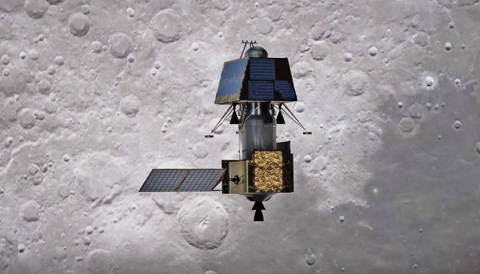
An artist’s conception of Chandrayaan 2 with the Vikram lander in orbit around the Moon.
ISRO
It wasn’t meant to be. After a six-week journey, the Indian Space Research Organization (ISRO) lost contact with Chandrayaan 2’s Vikram lander shortly before it was supposed to have touched down on the lunar surface. The Moon landing was set to occur on September 6th at 20:22 UT / 4:22 p.m. EDT. Vikram (Sanskrit for “valor”) separated from the Chandrayaan 2 orbiter on September 2th at 7:45 UT for a four-day descent that would take it 62 miles (100 kilometers) down to the lunar surface.
“India is proud of our scientists!” says India’s Prime Minister Narendra Modi on Twitter. “They’ve given their best and have always made India proud. These are moments to be courageous, and courageous we will be!”
The landing attempt occurred on a plain near the lunar south pole on the nearside of the Moon, between the Manzinus C and Simpelius N craters. The site is located near -71°S, and a successful touchdown would have made it the closest soft landing near a lunar pole to date. China’s Chang’e 4 mission landed near -47°S latitude on January 3rd. Israel’s SpaceIL Beresheet mission failed an attempted soft landing in April.
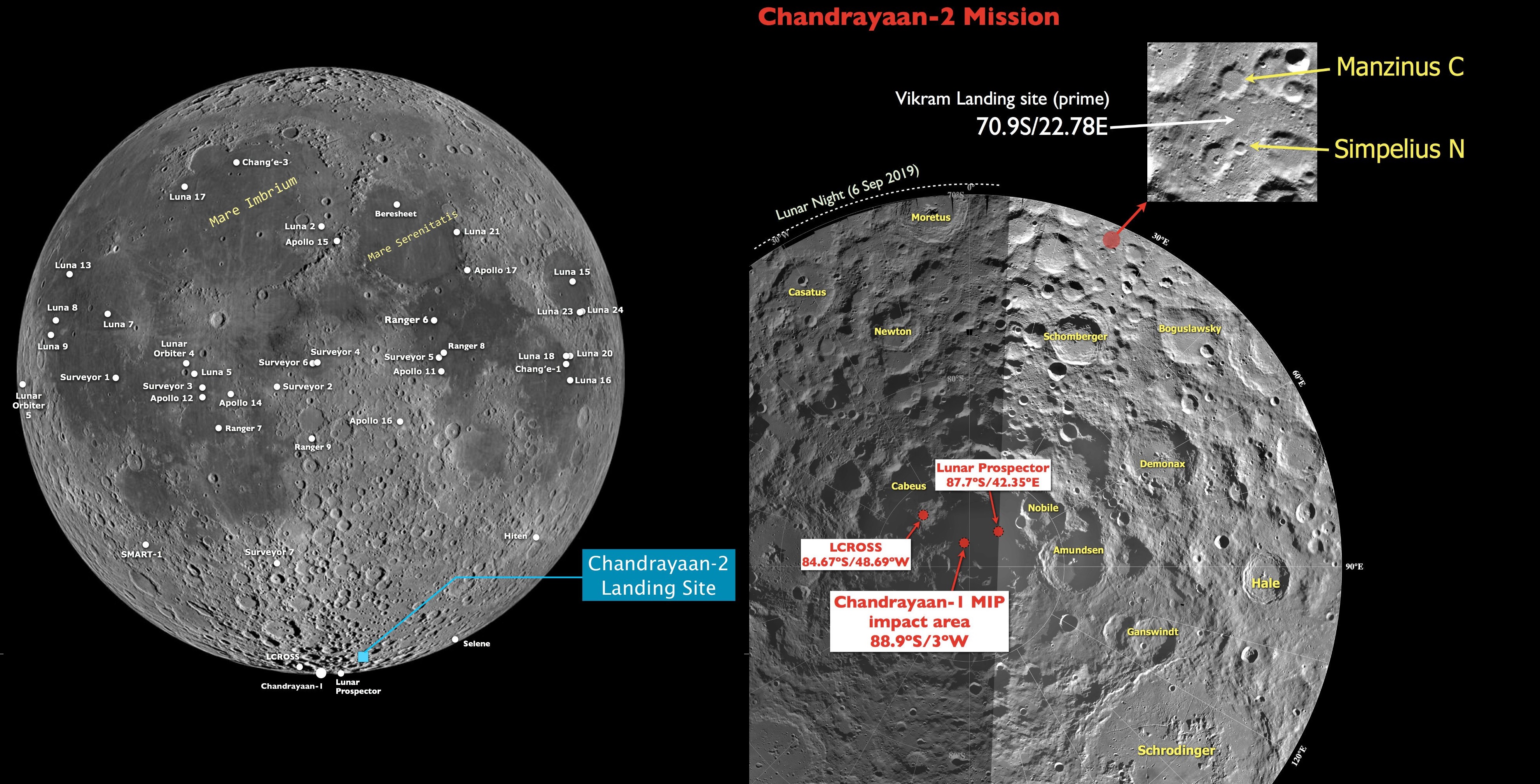
A diagram of the Chandrayaan 2 landing site versus all landings/impacts on the lunar nearside (left image) and impacts near the pole (right image). Click the image to enlarge.
Created by @hanipersian on Twitter
Launched atop a Geosynchronous Satellite Launch Vehicle (GSLV) rocket from the Satish Dhawan Space Center in India on July 22nd, Chandrayaan 2 took a leisurely path to the Moon via a series of orbital boosts, gradually raising its elliptical orbit around the Earth until it was captured by the Moon’s gravity late last month on August 20th.
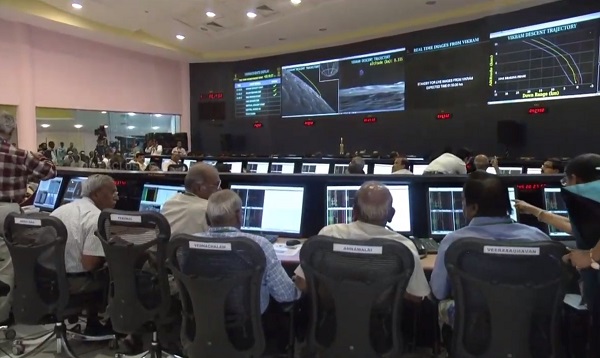
A screen capture of a tense ISRO mission control during the attempted Vikram landing.
ISRO / Doordashan News
The Chandrayaan 2 lunar orbiter began mapping the landing site and an alternate site last week, using its Orbiter High Resolution Camera (OHRC). Chandrayaan 2 will continue to map the lunar surface and monitor the lunar environment over the coming year.
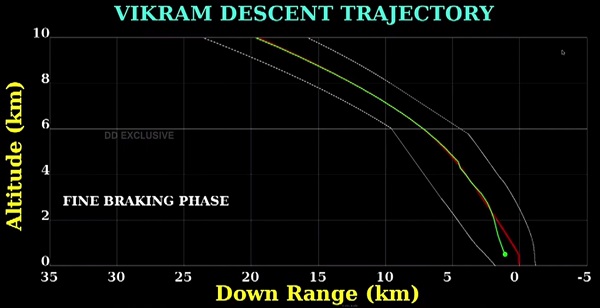
Screen capture of the trajectory of the Vikram lander at the moment mission control lost contact. Note the down range deviation at the end of the path.
ISRO / Doordashan News
The Vikram lander was set to to deploy a small rover named Pragyan (meaning “wisdom” in Sanskrit) shortly after landing. The solar-powered rover and lander made the landing attempt at local sunrise to give them both a maximum two weeks worth of daylight before they succumbed to the cold lunar night.
Listening for Vikram
The lunar landing site for Vikram and Pragyan was selected to search for lunar water ice trapped near the poles. An earlier ISRO mission, the Chandrayaan 1 orbiter, found direct evidence for water ice in craters trapped in perpetual shadow near the lunar poles.
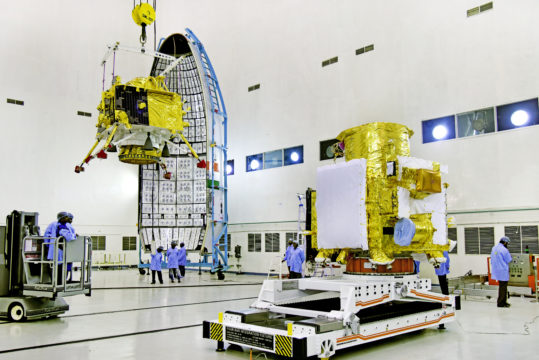
Vikram lander integration with the Chandrayaan orbiter on Earth, in preparation for faring encapsulation.
ISRO
The ISRO and NASA’s Deep Space Network will continue to listen for Vikram in the coming days, but the prognosis is grim. The Chandrayaan 2 orbiter and NASA’s Lunar Reconnaissance Orbiter may image the site as well.
We’ll add updates as the story unfolds. If skies are clear tonight, be sure to take a look at the waxing gibbous Moon just past first quarter — now the final resting place for an intrepid landing attempt.





